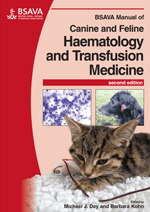
Full text loading...

Eosinophils are important components of the immune system and are often involved in hypersensitivity disorders and parasitic infestations. Eosinophilia is defined as an increase in the total eosinophil count in blood or tissue. This chapter covers pathophysiology; causes of eosinophilia; diagnosis and treatment.
Eosinophilia, Page 1 of 1
< Previous page | Next page > /docserver/preview/fulltext/10.22233/9781905319732/9781905319732.15-1.gif

Full text loading...


